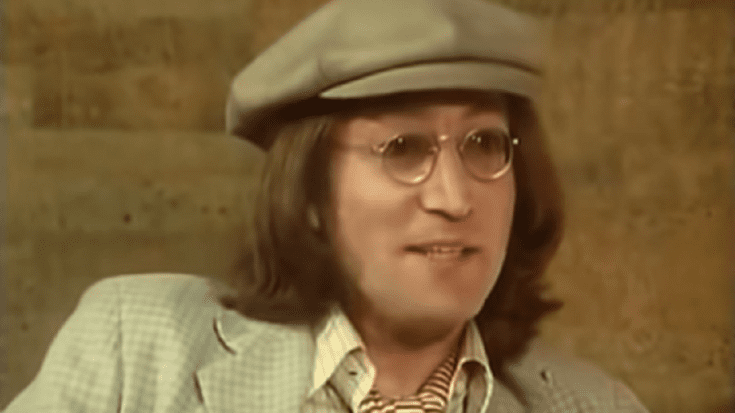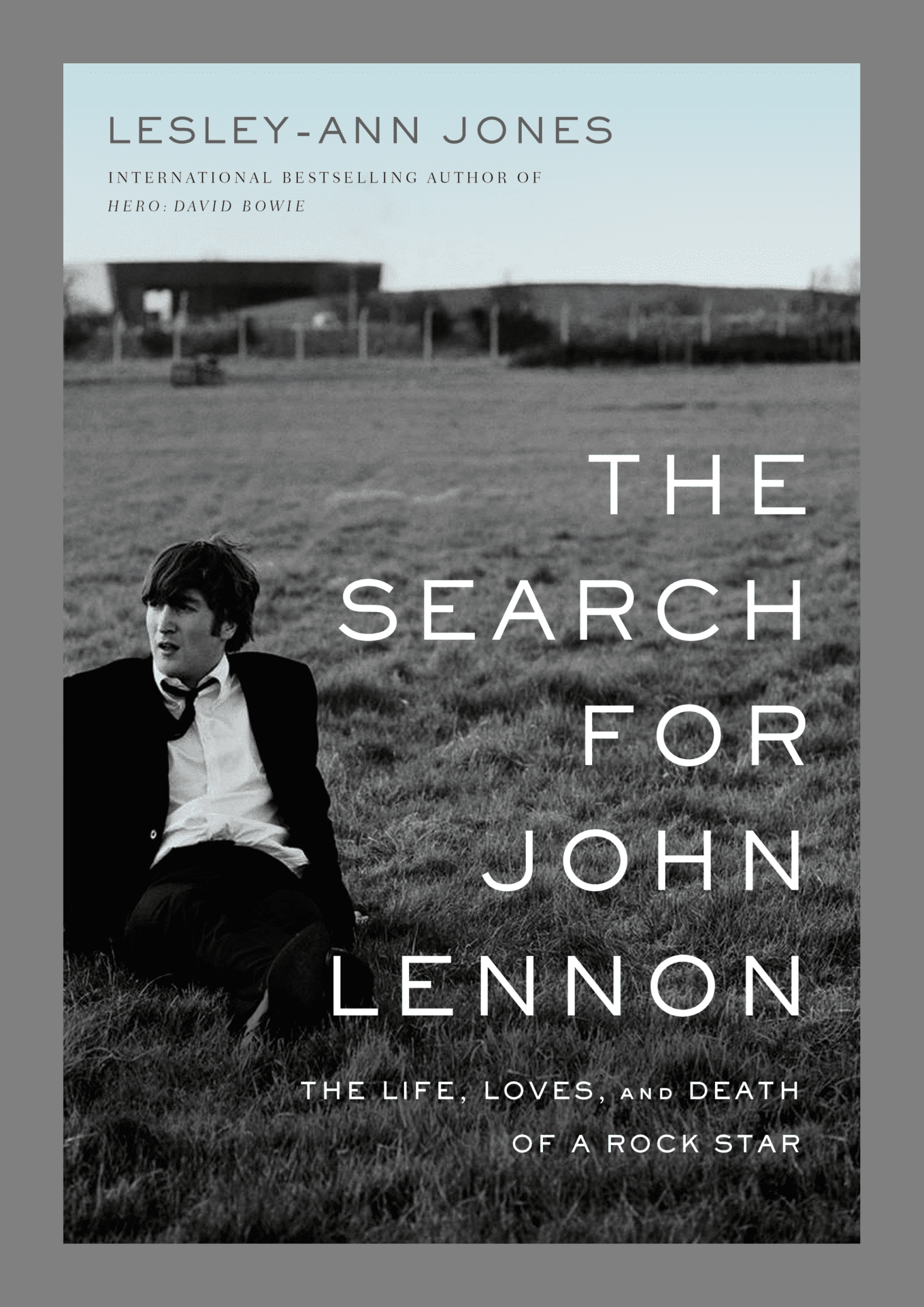
John Lennon remains one of the most iconic music artists of all time. He was able to find a massive amount of success with The Beatles at first and then as a solo artist.
A lot has been discussed about who he was behind the camera, notably regarding his love life. His marriage with Yoko Ono has been heavily talked about over the years since his tragic passing on December 8, 1980, although there was apparently a lot more going on with him when it came to who he bedded. And it didn’t include just women.
Author Lesley-Ann Jones dove deep into his alleged romantic trysts in her new book The Search For John Lennon: The Life, Loves and Death of a Rock Star. In it she talks about the men he apparently was intimate with including fellow rock star David Bowie.
Lesley chatted with us exclusively about all of this in our fascinating interview with her below. Take a look.

Were you surprised, in your research, to discover that John Lennon had male partners throughout his lifetime?
No, I wasn’t at all surprised. I worked in the music business and in the media for many years. I was at Chrysalis Records during the era of George Martin (later Sir), the fabled Beatles producer, when he ran his business AIR Studios out of our Stratford Place offices. George’s business partner was John Burgess, an old friend of my father’s. George, John Burgess and I would lunch together, and both spoke freely about Lennon’s pansexuality. It has long been the norm in the world of showbusiness. Many famous pop managers – Larry Parnes (Tommy Steele: the UK’s first Rock and roll star), Simon Napier-Bell (The Yarbirds, Eric Clapton, Jeff Beck, Wham!, George Michael), Kit Lambert (The Who) – were quite openly gay. Many people who weren’t gay themselves were fascinated by gay culture, and thoroughly enjoyed the campness of it all. I say ‘openly’, but of course people had to be extremely careful. Homosexuality was not partially decriminalized (that hideous word) in the UK until 1967. Activity, though common, had to be covert, for fear of a prison sentence.
John Lennon, along with many other pop musicians of his era, was curious, but had to pretend not to be. His first wife Cynthia Lennon swore blind that her husband was 100% heterosexual. When John went on holiday to Spain with the Beatles’ manager Brian Epstein, a closet homosexual, the rumor mill went into overdrive. At Paul McCartney’s 21st birthday party in Liverpool, Cavern Club DJ Bob Wooler teased John about his recent ‘honeymoon’ with Epstein, and John flew into a blind rage, physically wounding Wooler so seriously that he landed him in hospital. Years later, John addressed the incident in an interview, and admitted that he must have been terrified of “the fag in him” to do such a thing. He came to understand and appreciate his sexuality. He was an artist. He tried things. He experimented. It wasn’t about one thing or the other with John. It was about individuals and about connection. I believe that he saw the sexual dimension as an extension of the bond he forged with certain people. He wasn’t confined about it.
McCartney denied that there could have been ‘anything gay’ about Lennon. ‘I slept with him hundreds of times,’ said Macca, by which he meant that they had shared hotel bedrooms and even beds all over the world, from their earliest Hamburg days when they lived in squalor. John, he insisted, had never “tried anything” with him. That didn’t prove, of course, that he didn’t with others. John would have regarded such a move as “incest”, anyway, because he and Paul were closer than brothers. For the same reason, he didn’t “try anything” with his lifelong best friend Pete Shotton, either. There were lines you didn’t cross.
How deep did his relationship with David Bowie get? Did it happen when they were both with other people?
David was an obsessive Lennon fan. Having long been inspired by the Beatles, David created his fictional group Ziggy Stardust and the Spiders from Mars in response to their alter ego lineup Sgt. Pepper’s Lonely Hearts Club Band. Playing a rock star rather than simply being one proved to be the catalysts for his own global breakthrough.
“Rock and roll is just a pose,” he shrugged. “All of it is. And no one does it better than my hero John Lennon.”
He and his idol came face to face in Los Angeles in 1974, during Lennon’s so-called Lost Weekend: an agreed 18-month estrangement from his second wife Yoko Ono during which he was partnered by their beautiful young assistant May Pang. While John was on one of his frequent breaks from May, he and Bowie went out to play. They later “hooked up”.
“There was a whore in the middle, and it wasn’t either of us,” David told me over lunch in New York in 1990. “At some point in proceedings, she left. I think it was a she. Not that we minded.” David was married to first wife Angie at the time. John was married to Yoko but separated from her, and was with May.
By the time they made it back to New York, they were lifelong friends. John pitched up at Electric Lady Studios NY in January 1975, during David’s recording of a cover of the Beatles’ “Across the Universe” for his new album Young Americans. It featured Carlos Alomar and young guitarist Earl Slick. Slicky went on to work with Lennon on Double Fantasy, the final album of John’s lifetime. John contributed to David’s track “Fame”. It gifted David his first US number one – and irritated the hell out of him that he couldn’t have achieved it by himself. It took a Beatle – albeit his favorite Beatle, and the one whom he credited as the inspiration and energy of the song – to help it to the top of the chart.

Rumors about David’s sexuality swirled for years especially after the music video of him with Mick Jagger was released. Did you know anything about them as well?
No one was surprised when David harnessed the spirit of the 1970s and repackaged it to his own advantage. That was him to a T. His posturing and performances inspired a generation of gay, lesbian and transgender people. When he came out in 1972, despite the fact he had a wife and child at home, both industry and fans were both shocked and enchanted. Surrounding himself with ambisexual eccentrics, he frequented gay clubs and engaged an androgynous friend as his costume designer. He wore the startling hair styles and make-up non-ironically. He pushed the boundaries of abandonment and self-indulgence, and helped to make it acceptable to be gay, bi or trans. Thanks to him, the defining crossover of the seventies turned out to be the so-called “straight gay”.
He and Jagger definitely had a fling. Angie found them naked in bed together. She said she just shrugged and asked if they wanted coffee. This was after David had enjoyed a dalliance with Mick’s first wife Bianca in Spain. He did that to get back at Jagger, whom he always felt had the upper hand. Inevitably, he and Mick were drawn to each other. “It was the seventies”, as people used to say. It was also Rock and roll: whatever it was, in those days, why not? When they recorded Martha and the Vandellas’ “Dancing in the Street” for Live Aid, they made the attraction between them pretty obvious. There is a natural sexual fluency about their interaction which leaps off the screen. It’s impossible, even for Oscar winners, to fake that kind of chemistry.
Do you think John kept his same-sex relationships quiet because it was very, very taboo to be anything but straight at the time?
As explained, it was not only taboo, it was illegal. Exposure of it could have culminated in a jail sentence. All young men ran scared here in those days.
What about his alleged relationship with Beatles manager Brian Epstein? Was it just a physical thing or was there more to that?
Brian was in love with Lennon. Several people I interviewed for the book confirmed this, including former Granada Television boss Johnnie Hamp, the first producer to put the Beatles on television, who got to know both Epstein and Lennon well; and Simon Napier-Bell, who was part of the same friendship group in “Swinging Sixties” London. He told me that both Epstein and Lennon confided in him about it.
“Brian had no reason to lie,” Simon said. “It makes sense: if John was gay, he needed to get on and try it. As it turned out, he wasn’t. But John tried things out. He didn’t shy away from experiences. Anything at all, whatever it was: a new drug, a new religious idea. John was the leader in all the things the Beatles did that were new and experimental.”
“John Lennon didn’t go to public school, so this was about him trying something he’d never tried before. There was mutual admiration, which can turn very easily into lust between two men. Especially entertainment-industry types who have gone out, had a few drinks and find themselves alone together. What I don’t understand is why people have made such a big deal of it all these years. It’s no different from trying Japanese food. Try it, you might like it. Inquisitive, that was John. Why wouldn’t he try it?”
Ultimately what are you hoping people get from your book about John, David and anyone else mentioned in it?
I would like them to take away the John behind the Beatle; the damaged, dysfunctional boy whose unresolved relationship with his mother was the source of all his angst; whose songwriting was one long cry for help. John has been denounced for years as “not a very nice guy”. We are used to hearing stories about how badly he treated others. I hope I have presented a 360-degree John for whom people will have compassion, and who they will feel able, in this the 40th year since his assassination, to celebrate anew.
